
With the very traditional NJ4 which I did not like very much, I discovered that part of the reason I enjoy the SX basses so much over other offerings on the market in the entry level price bracket is it's thicker growly tone. This knowledge guided me in choosing some options to try in studio. Obviously, it would be optimal to find a low-cost import pickup that filled the gap, but I cast the net wide to hear the options. Here they are:
Nordstrand NJ4SE's. I'm noticing different wire on the coils on these and they're wound pretty hot. I'm hopeful these will be in the sonic range we are looking for. Nordstrand has considered on many occasions discontinuing this pickup due to customer complaints about its very different sonic footprint from traditional jazz bass offerings. Perfect for what I'm after.
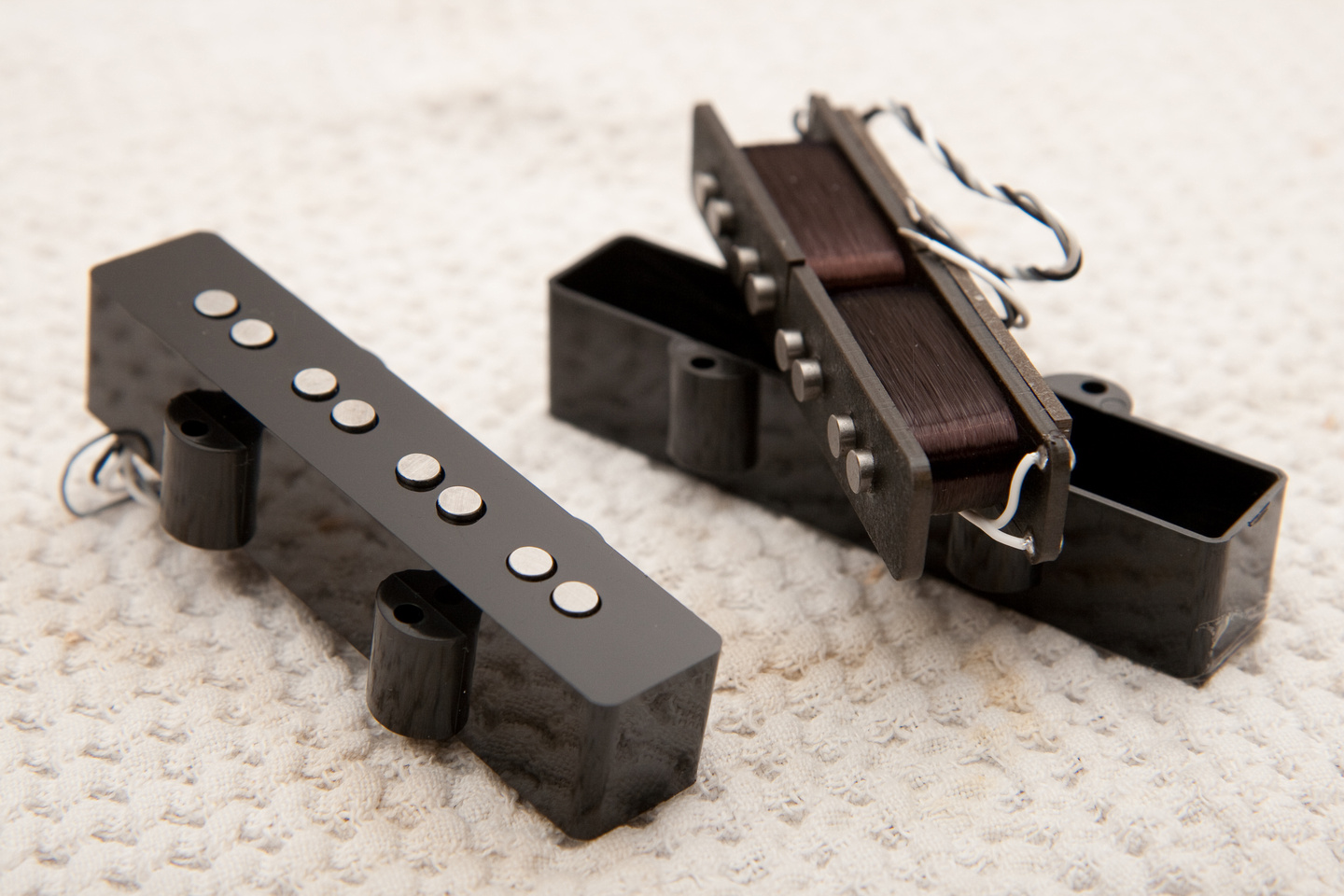
Also, the GFS jazz pro pickups came in. They are epoxied in so I can't see what's inside. These single coil pickups made from traditional materials seem to have a strong following and are wound a bit hotter than the traditional jazz pickup.
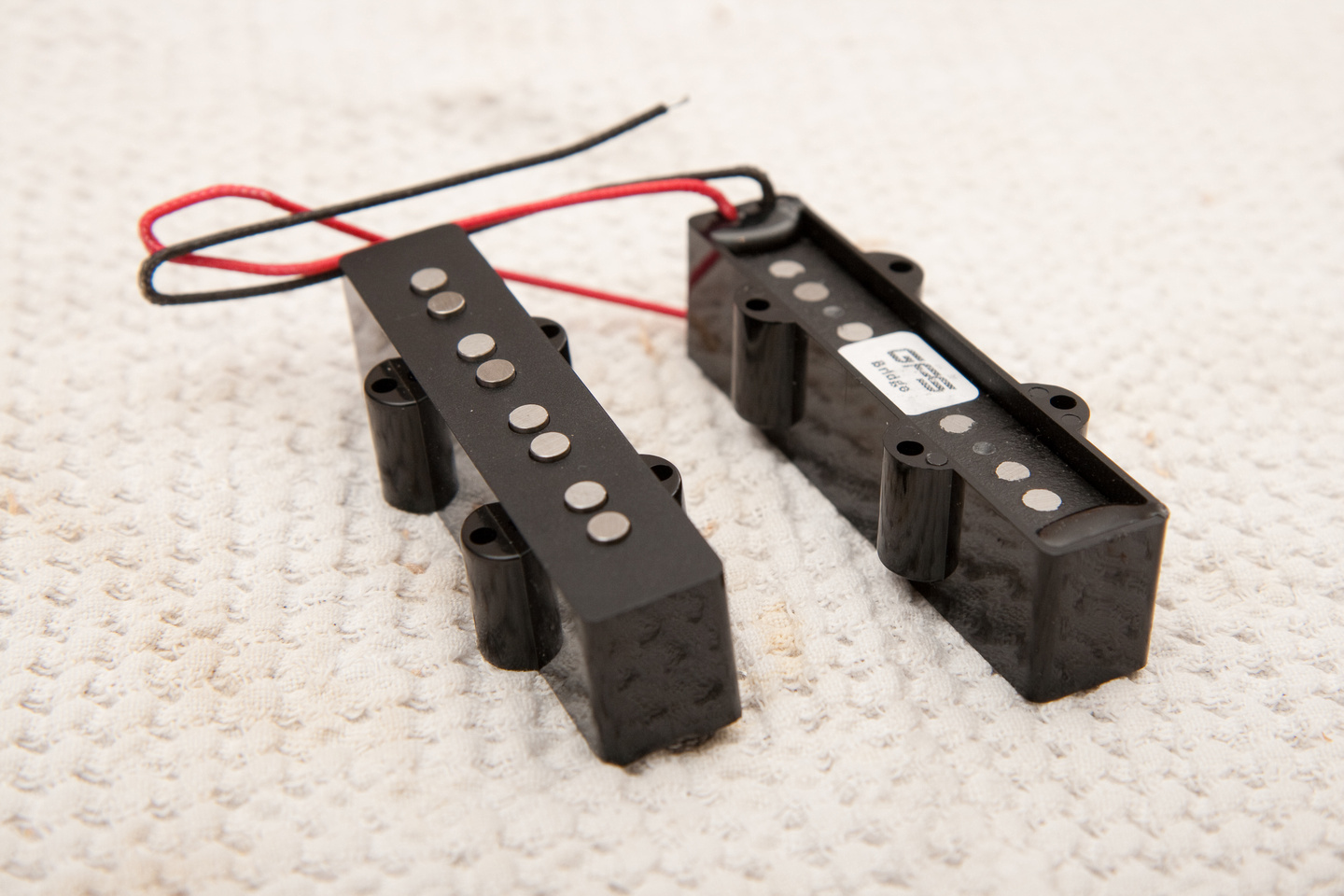
I also found a pair of DiMarzio Model J's on the talkbass.com forum classifieds. These split coil humbuckers have been around for quite some time and also have a strong following. The fact that they are ceramic pickups may bode well for our test because the stock SX pickups are ceramic as well.
Mike and Carey over at Nordstrand brewed me up a nice pickup to try based on my preliminary feedback on the NP4 pickup in #4. I am getting "in my opinion" a lot of extra treble information from the pickup that I either roll off on the tone knob or attenuate at the amp. I also personally am not as into the "hollow/grindy" sound. . . so, they wound me a set of NP4's 10% over. . . beauties.
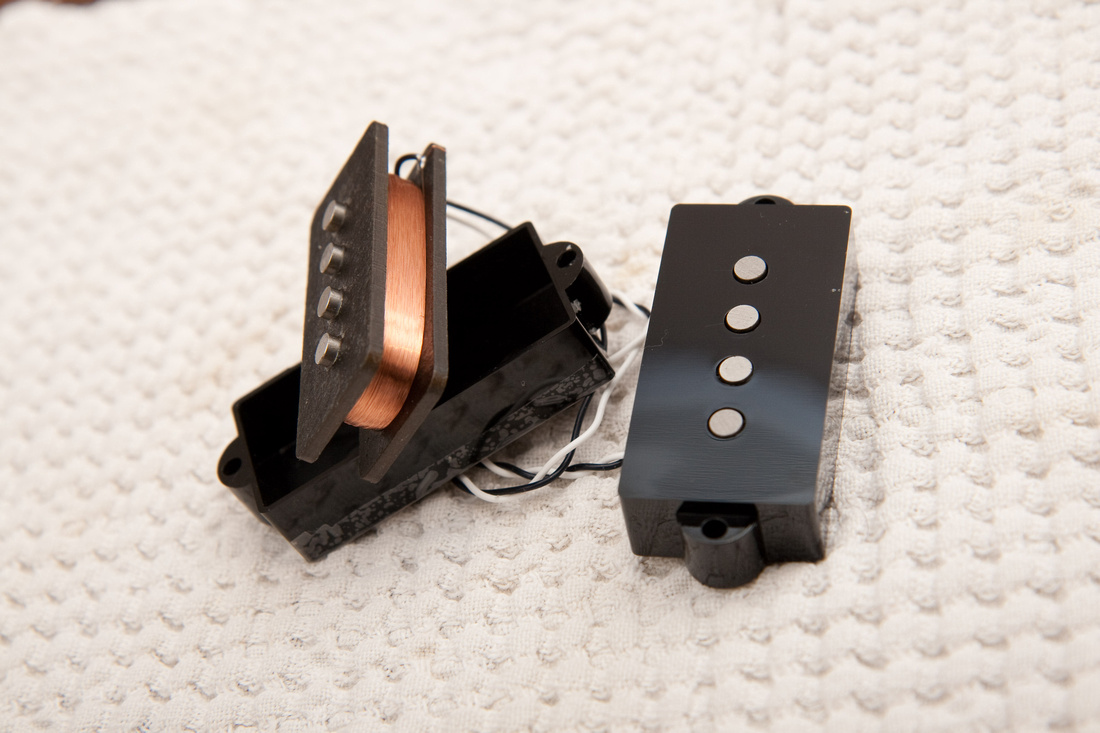
We will attempt to track 6 samples songs for each of these configurations:
1. #3 with Nordstand NJ4's
2. #4 with Nordstrand NP4 (swap pickups during tracking)
3. #3 with GFS pro jazz (swap pickups during)
4. #4 with custom "hot" NP4 (swap pickups during)
5. #3 with DiMarzio model J
6. #5 (swap pickup during)
7. #3 with Nordstrand NJ4SE
I will be solder monkey for the night, Jon from Studio 1225 will handle recording duties, and Jasaman will be the suicidal bass player. We'll see how far we get before we crash and burn. That's 42 songs total.
I believe we hit our goal with all 3 of the new jazz pickup options (GFS pro jazz, DiMarzio Model J, and Nordstrand NJ4SE). They all gave us the punch we lost with the NJ4 swap. It was good to know that all of the options I had selected were moving us in the right direction and technically, all of them "worked".
Ok, some worked better than others, and at the end of the night, Jasaman walked home with DiMarzio Model J's inside #3. The is a good gap between the import GFS pups and the other more expensive US made options. There is something really special I think about the NJ4SE and the Model J.
I'd characterize it like this. . . the Model J is like a Yamaha or Honda. . . it just runs and runs well without complaint. All of the detail, grit, nuance, and punch that you need are there and it delivers them in a very smooth "produced" manner. The pickup is easy to learn; great tone is instantly available; and it does not mis-behave. It seems to me in the studio, it has just the right amount of treble to keep the "clank" down but still delivery a rich, smooth top end. Jasaman was not looking at the price tags in this session. He was simply looking for the best pickup for his needs among the candidates we had available. This one went home with him.
The Nordstrand NJ4SE is more like a Ducati. . . it also runs and runs well, but it'll snap, growl, and get all sideways on you if you give it the wrong input. It has loads of punch and I would say it has more bite in the upper midrange and more extension on the treble. There's a big, tight low end on this pickup as well. . . enough for any application --> not as much as the Model J though. The NJ4SE is a very well thought-out pickup that is very refined. This kind of balance does not come by accident. While it is not as forgiving as the Model J, I would venture to say it is more responsive to your finger inputs. A special pickup indeed and I can definitely see myself putting this pickup in a bass over the Model J. We tested the NJ4SE before the Model J, and when we put this in, we knew it was great. . . period. At that moment, we knew very few pickups would be able to top this. It's a touchy little guy though, and may take some time to really get dialed in. This pickup I think sits well into modern territory, but still flirts with traditional.
The GFS delivered a very similar sound and output to the stock SX pickup without falling apart like the SX does. It does not, however give nuance and complexity like the other 2. In my opinion, it is an ok pickup, but it is not a giant killer. It is, however highly functional and a good step above the stock SX without a super-hefty price tag. But, +$40 gets you into the Model J.
All of this rambling is subjective banter though. . . sound clips will be forthcoming.
It was not a 1-1 test like the Jazz pickups, but the Nordstrand NP4 trounces the GFS p-bass pickup. . . more solid bottom and more articulation on the top end. I was extremely pleased with the custom 10% overwound NP4 and I came home with the overwound pickup in #4. . . which was mis-behaving during testing because the nut slots were hacked at the factory. I knew the nut would need to be replaced on this instrument, but the frequent re-setting agitated the problem and caused fret buzz on open strings. Still, the test samples were good enough to give good data.

A sortof 1/2 Nascar pit crew, half recording session experience. The speed at which I am able to dis-assemble, re-assemble, and set up an instrument has never really been tested like this before.
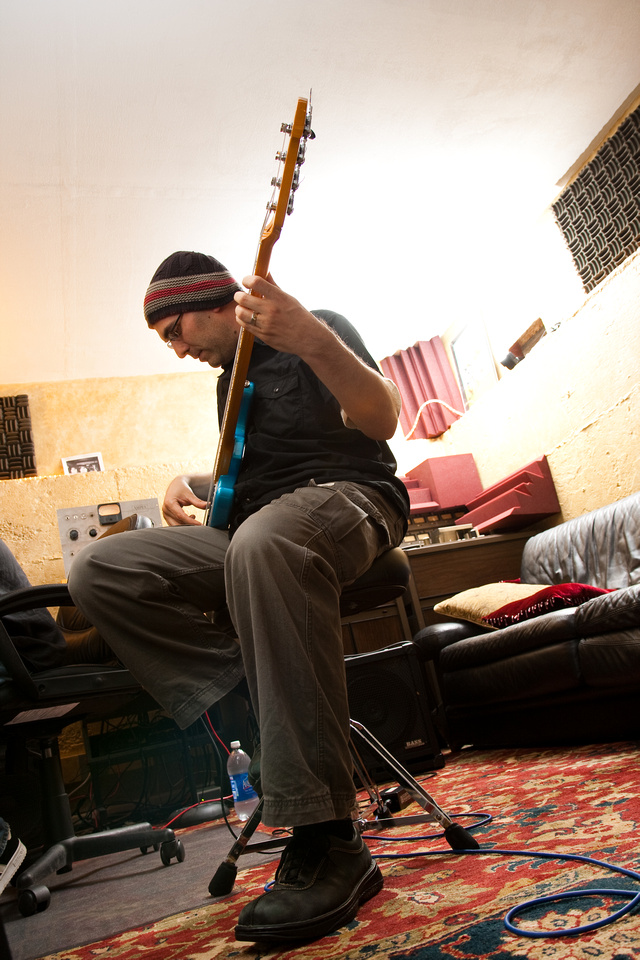
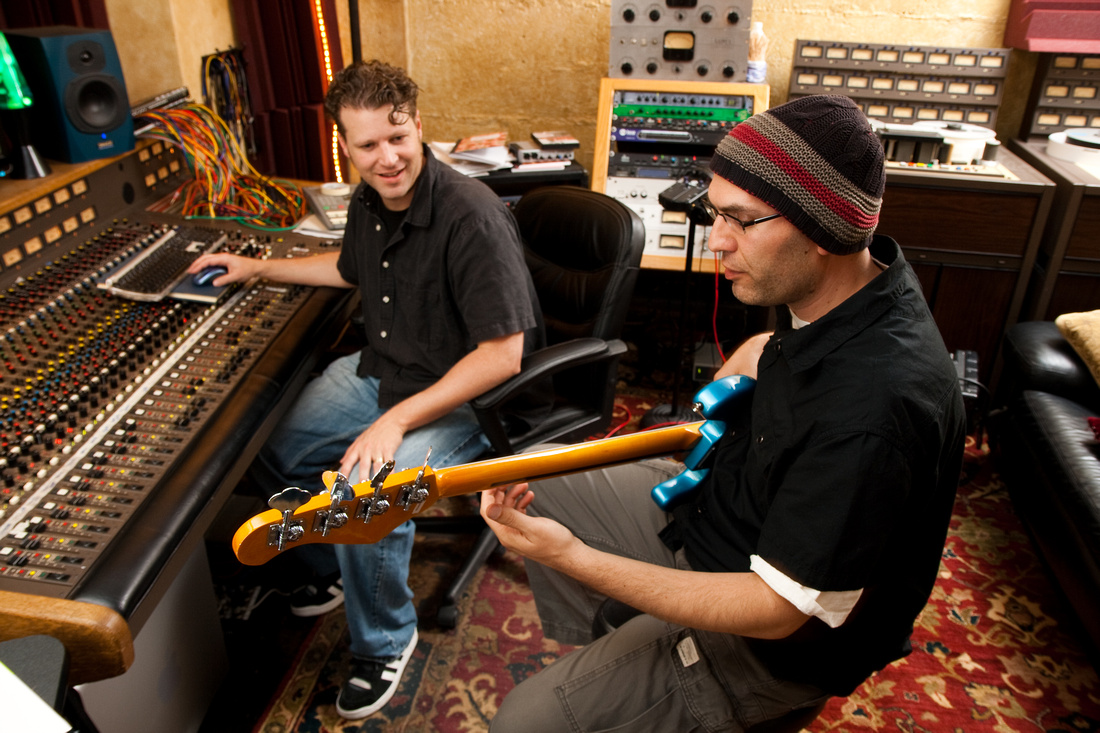
And, our winner for the evening. . . (tested it without the pickguard because it had to be slightly cut to fit the Model J).
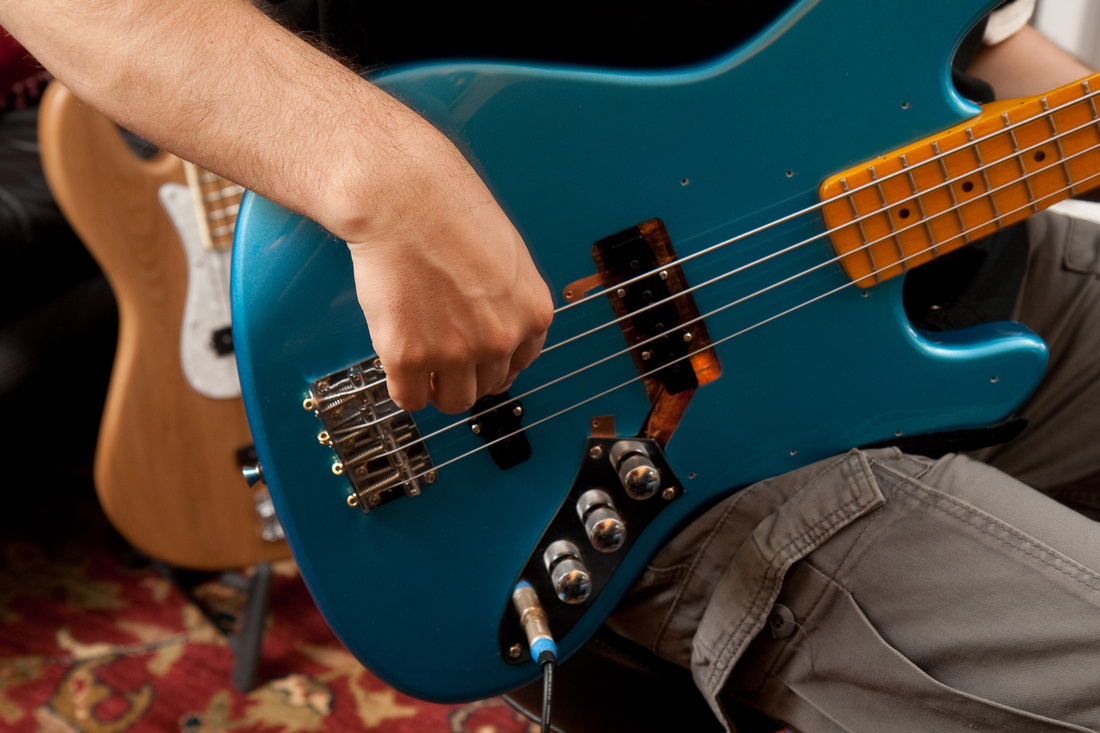
Anyways, these tracks are recorded straight digital into logic. The
bass signal chain is bass --> Countryman DI --> MCI console -->
A/D --> Logic. No EQ going in or coming out just the straight bass.
There is compression and limiting happening on mixdown. I wanted to
be honest about the bass tones, but at the same time reflect a real
world scenario. The basses all had different output levels so gains
were adjusted accordingly to get a good recording and mix.
Control Stock SX pickup recording from previous session. . . sorry about the disparity in levels. Different setup on an old analog console on different days and I was the operator on the first series of tests. . . Jon was operating on the recent set. Gain structure was probably set different.

Control Stock SX pickup recording from previous session. . . sorry about the disparity in levels. Different setup on an old analog console on different days and I was the operator on the first series of tests. . . Jon was operating on the recent set. Gain structure was probably set different.

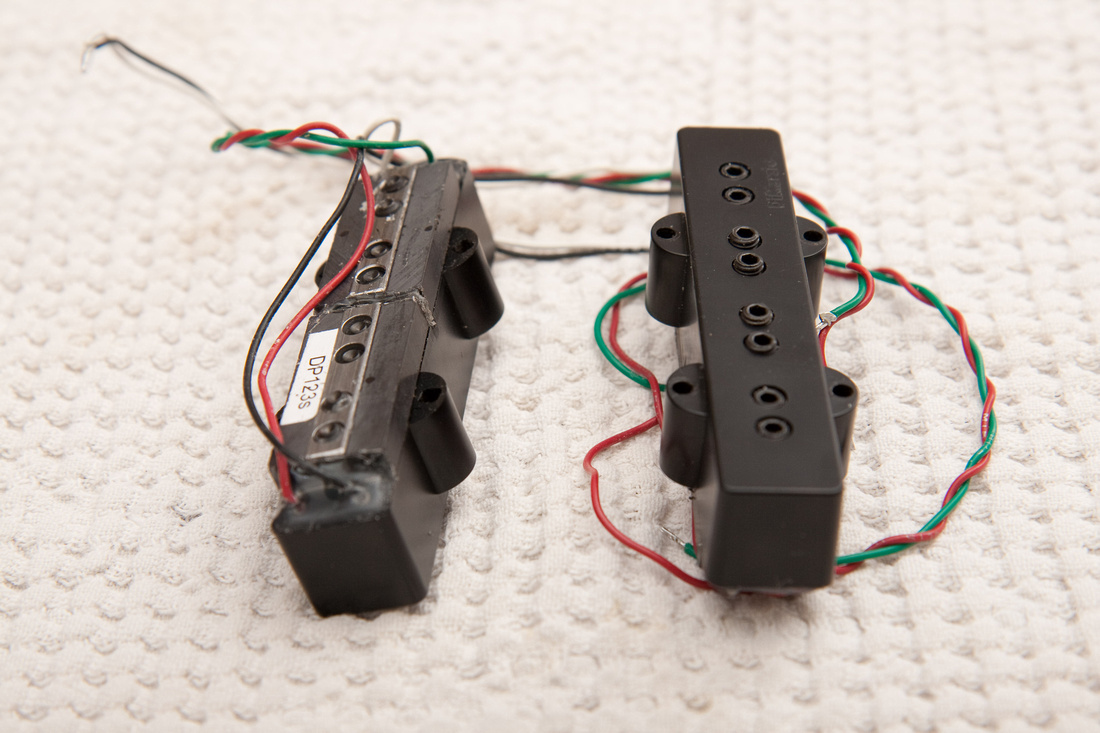





















nice thread
ReplyDeleteappreciate all the testing.. have old model j's in a jap jazz..
ReplyDelete